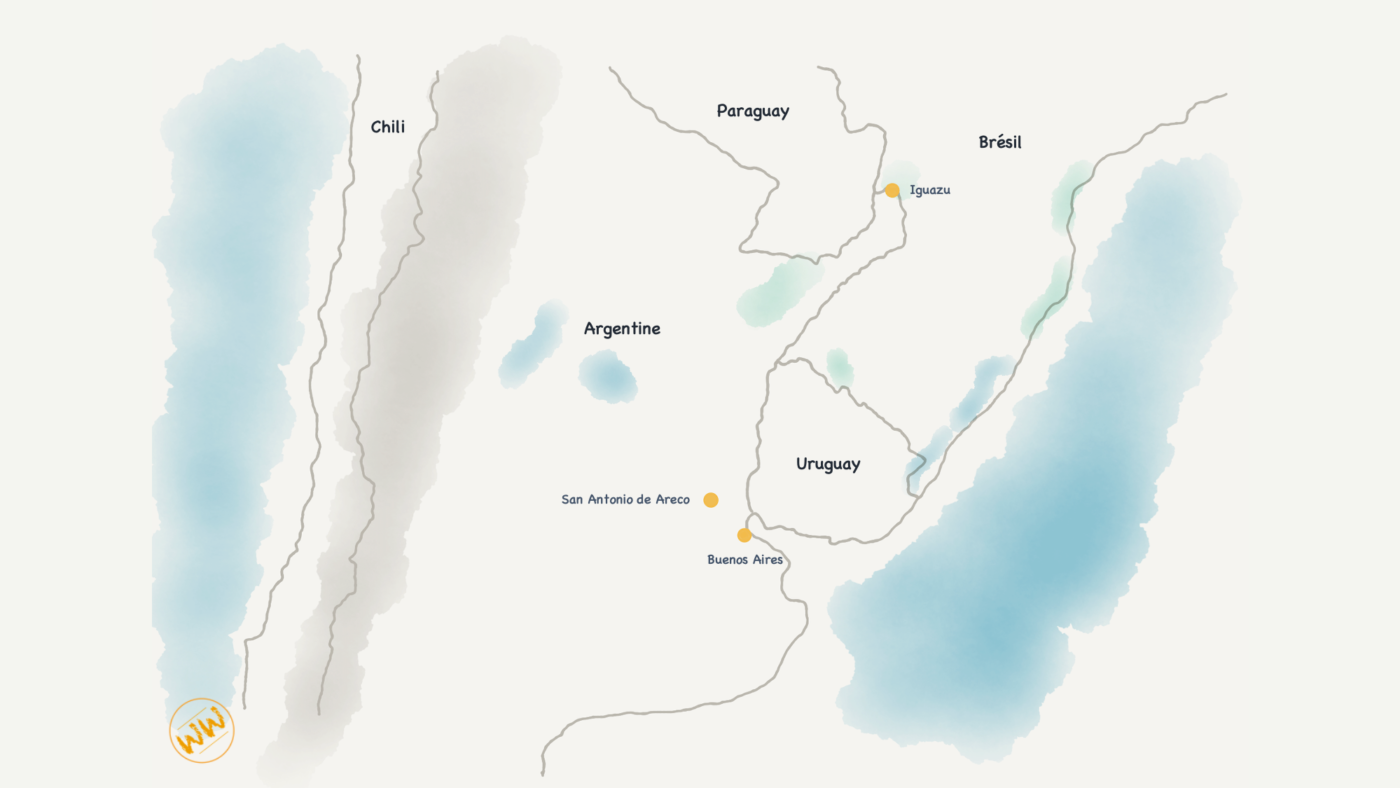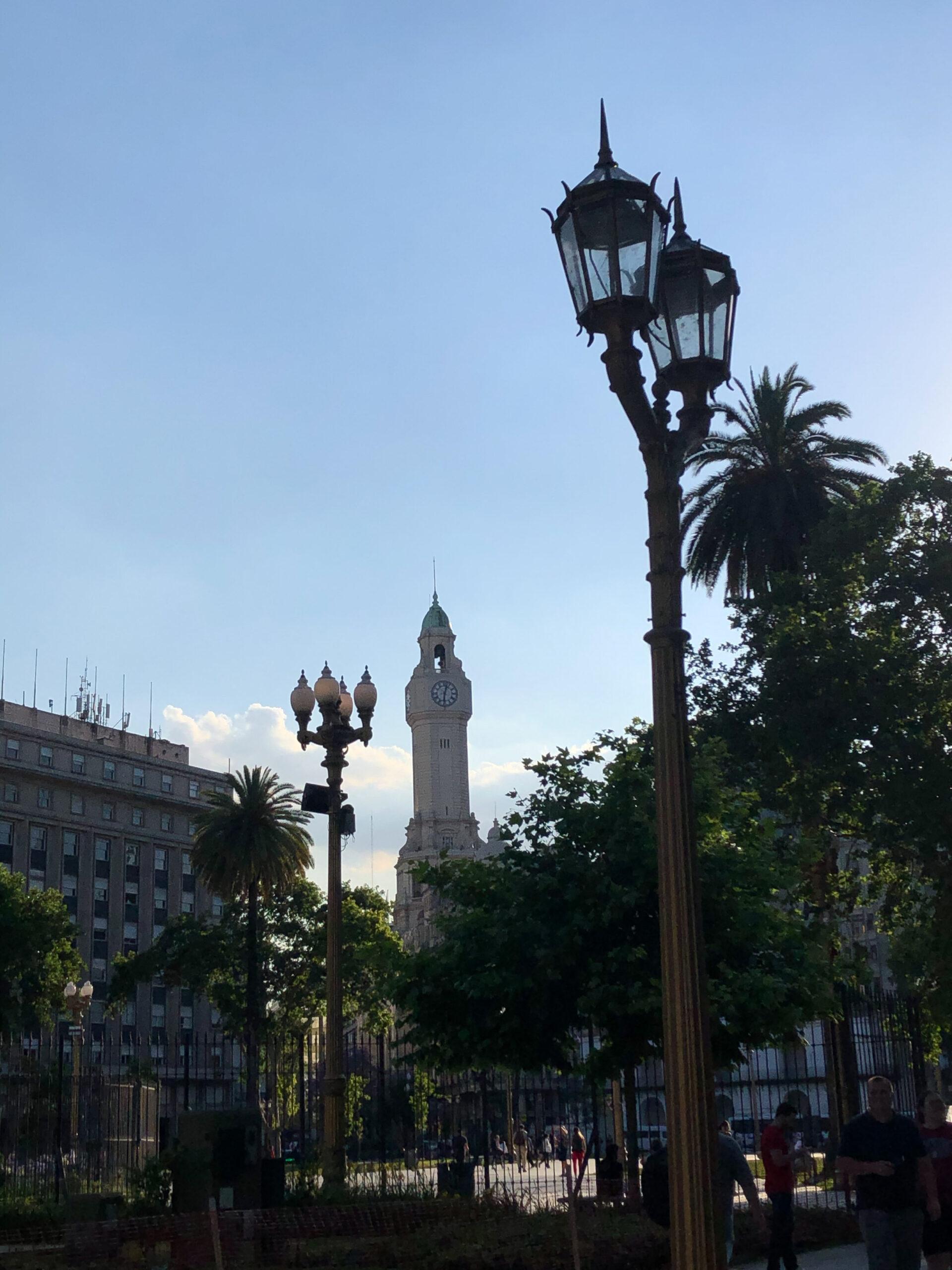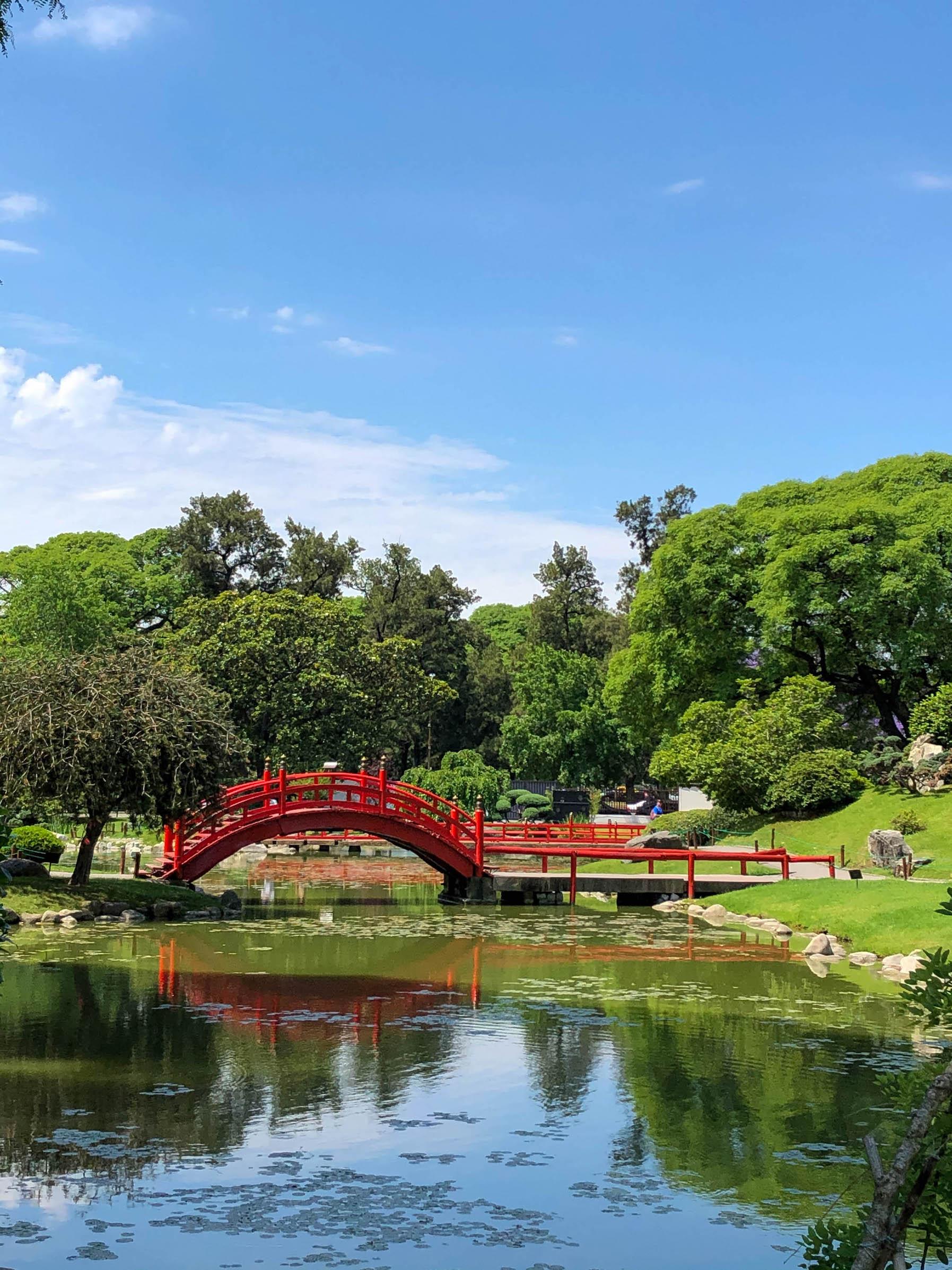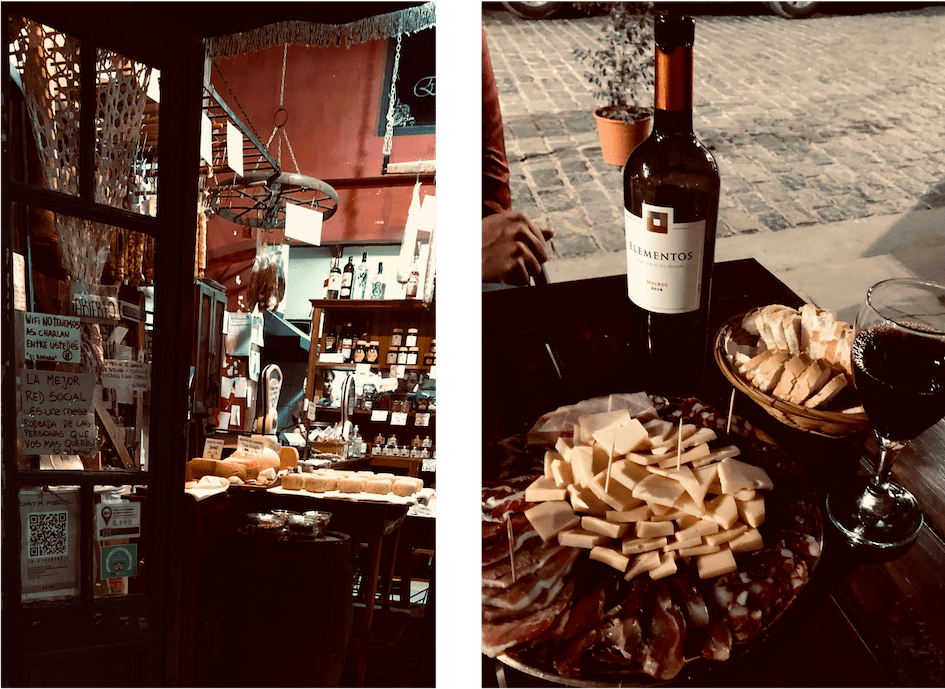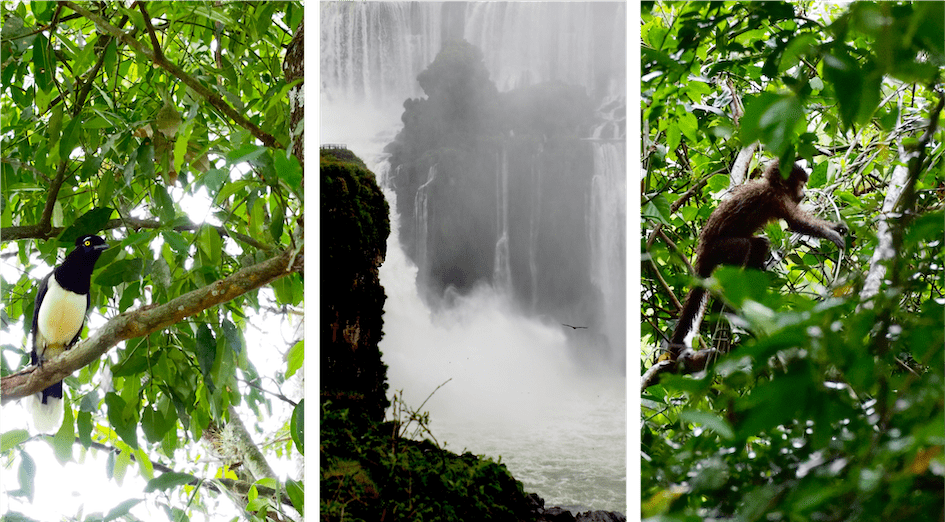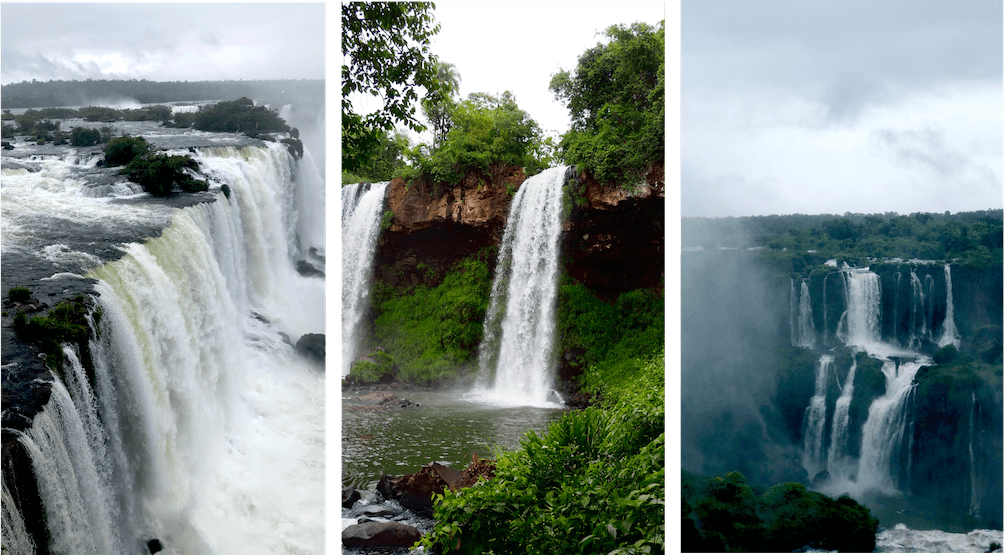Reading time: 5 minutes
Stage 1: Buenos Aires (2 1/2 days, 3 nights)
As soon as we got off the plane, the hectic pace of the city took over our daily lives. We spend two days wandering through the neighbourhoods of Buenos Aires, the time for us to get back in touch with civilisation.
We recommend
1. Centro
To get a feel for the city life of Buenos Aires, there is nothing better than to get lost in the streets around the Plaza de Mayo. On either side of the Avenida de Mayo you will find the organs of Argentine power: the Congress to the west, whose architecture is reminiscent of that of the United States, and the Presidential Palace, better known as the Casa Rosada, to the east. Many historical buildings, such as the Cabildo and the cathedral, have made the Plaza de Mayo famous.
The Porteños are busy in a tumult worthy of a European capital... the calm of Patagonia seems far away!
2. Recoleta
- Recoleta Cemetery: As soon as you step inside, you can't help but compare it to Père Lachaise. There are no fewer than 4,000 tombs - a city within a city! If you'd like to visit the cemetery in a wheelchair, just ask the reception staff, who'll open a side door for you to avoid the steps up to the main staircase.
- Musée des Beaux-Arts : the museum's permanent collection is free! A refreshing break on the way to Palermo.
3. Palermo
- Japanese Gardens: On the Route des Bosques, you can visit Japanese gardens (free for PRMs, AR$200 per person). This wasn't our first visit and we were somewhat disappointed. However, if you've never seen one, it's a great discovery to make.
- Bosques de Palermo: From Recoleta, you can reach Palermo via the Bosques Park, an immense green setting in the heart of the city. Take your time to stroll along the lake, passing through the rose garden where no fewer than 18,000 roses of every color await you.
- The heart of Palermo: no, you're not in Brooklyn but in one of the trendiest neighbourhoods in Buenos Aires. Here, cafes and thrift shops line up around Plazoleta Julio Cortázar. It's the perfect neighbourhood to enjoy a brunch or some empanadas on the go.
4. La Boca
The Boca district is not known for its security. We walked there from the Casa Rosada through the main streets. The shops and bars on Magallanes street close at about 6pm, so we advise you not to stay after that time to avoid disappointment. An afternoon is more than enough time to get there and enjoy it.
- Caminito : Although it consists of just a few streets, it is by far the most touristic district! Its colorful houses attract many visitors... To avoid them, it's best to get here early in the morning. For our readers in wheelchairs, the street is made up of large cobblestones that are not very evenly aligned, so a third wheel is more than welcome! Finally, the shopping mall "Caminito" shopping mall has accessible toilets.
- La Bombonera: the iconic Boca Juniors stadium can be visited but football fans will not be able to attend a match as tickets are reserved for locals.
Novotel Buenos Aires: This hotel is located in the city centre, only a few minutes walk from Casa Rosada and the Centro. Accessibility: 5/5
If you want to go to the city from the airport, get a taxi ticket in the arrivals terminal and pay the actual fare. You may be stopped by bogus drivers who will charge you double.
Rawa: a Peruvian restaurant that doesn't look like much from the outside. They serve good and hearty ceviche! The service is fast, perfect to leave with a full belly in the streets of the city.
Café Cabildo: for once, we met up with our friends Ninon and Sylvain from Pigeons Voyageurs for a drink in a street away from the hustle and bustle of the Plaza de Mayo.
Street Market del Bajo: among the various stalls (sushi, burgers, pizza) in this covered gallery, we turned to the Merkado Amalur. It specialises in Basque cuisine. We couldn't resist trying their delicious pintxos!
La Esquina Homero Manzi: you can't come to Buenos Aires without seeing a tango show! During two hours, you will see 4 couples dancing in front of your eyes. Dinner is compulsory and you will be spoilt for choice on the menu. The price of the show (1400 ARS or 21€ per person) is in addition to the dinner. Remember to make reservations if you are spending a short time there so as not to miss this institution.
Bad Toro: In Palermo there are many bars and restaurants surrounding the Plazoleta Julio Cortázar. We wanted a quick bite to eat before heading to San Antonio de Areco and we were not disappointed.
Patio Quinquela: just a stone's throw from Caminito, on Magallanes, the colorful facade of this market is sure to catch your eye! A few tables in the middle of the pedestrian street are just the thing to quench your thirst in the sweltering heat of a summer's day.
Stage 2: San Antonio de Areco (2 days, 2 nights)
From Buenos Aires: 1h30; 117 kilometres
San Antonio de Areco is a town where it is good to live in slow motion. The hustle and bustle of Buenos Aires will seem far away and it is a real pleasure to be able to enjoy a mate in the main square without worrying about the passing of time.
If you come for a weekend, there is a local craft market under the shade of the trees next to the Puente Viejo.
We recommend
The Museo Gauchesco Ricardo Guiraldes and the Parque Criollo. Pass the Puente Viejo to get to the Gauchesco Museum. This place is a goldmine on the world of the gauchos: everything you ever wanted to know about their origins, customs and outfits can be found here.
The park is wheelchair accessible, however both houses have a step at the entrance for which assistance may be required.
You will be spoilt for choice for accommodation in San Antonio de Areco!
We chose the Posada de Don Segundo for its central location, a stone's throw from the square, and for its interior garden. The room is not 100% accessible (small step in the shower, no grab bar) but the couple who welcome you will try to meet your expectations.
The city of San Antonio de Areco offers a few addresses around the Plaza Ruiz de Arellano:
El Batara: our real favourite! Located below the square, this delicatessen allows you to taste home-made specialities on the spot... a real treat!
El Tokio: for our second evening, we had a drink in the sun on the terrace of this restaurant while waiting for the opening of the first one... When we say that we had a crush!
Stage 3: Iguazu Falls (2 days, 3 nights)
The Iguazú Falls, located in the middle of the tropical jungle, were discovered in the 16th century by Spanish settlers. Some 300 years later, in 1984, they were declared a UNESCO World Heritage Site.
We recommend
Iguazu Falls
It is better to arrive at the opening of the park at 9am to enjoy it as long as it is not too crowded. Although we sleep on the Brazilian side, the border crossing is very fast: no exit stamp on the Brazilian side and a new one on the Argentine side is obtained in a few minutes.
The park can be visited entirely on foot and several paths are accessible:
- The upper circuit (1,750m, 2h walk, 100% accessible): it takes you into the heart of the rainforest and at a bend in the road you will come face to face with one of the waterfalls.
- The lower circuit (1,700m, 1.5 hours walk, 70% accessible): Only part of this path is accessible before you are blocked by stairs. There are many viewpoints on the cliffside that will give you a more comprehensive view of the falls.
- Devil's Gorge (2,200m, 2h walk, 100% accessible): The most impressive waterfall in the park! If you venture out on the footbridges, you will hear it roar in the distance and when you get there, beware you might get wet! To get there in a wheelchair, you have two options: on foot, but the path is not entirely paved, or by train, which takes you directly to the first footbridge.
Unlike the Argentine side, there is no real place for walking. A (wheelchair accessible) bus leaves at regular intervals from the visitor centre to the one and only footbridge. As the space is much smaller, it is much more difficult to slalom between the tourists and the pleasure is somewhat spoiled.
When you come, we advise you to start with the Brazilian side so that you can save the highlight of the show, the Argentine side, for the end!
Marco das Treis Fronteiras
Iguazu is not only an extraordinary cascade of waterfalls, it is also the border between three border between three countries Argentina, Brazil and Paraguay. On each side of the Rio Iguazu, an obelisk has been erected in the colors of each country. Although very touristy (souvenir stores and restaurants), the view of the river is well worth the effort.
Iguazu Falls
- Argentinian side: Entrance to the park costs AR$800 (about €11) per person, it is free for PRM and their companions.
- Brazilian side: Entrance to the park costs 72BRL per person (about 12.5€, no discount for PRM).
Marco das Trois Fronteiras
Admission costs R$28.5 per person (about €5), free for PRM. Opening hours: 2pm to 10pm.
In order to make the most of the falls, we slept on both sides of the border!
- On the Brazilian side, the Ibis Foz do Iguaçu just 30 minutes from the Brazilian Falls.
- In Argentina, the Mercure Iru is one of the closest to the national park.
This short stay in Iguazu between the two countries did not allow us to discover local restaurants. Here is the only address we tried:
- Maki Sushi : at the foot of the Ibis Foz do Iguaçu hotel, hearty and good food!
In our next article
Iguazu marks our arrival in our last country in South America, Brazil. For three weeks we explore the Costa Verde until our last stop in Rio de Janeiro with its iconic beaches, the Corcovado and its Sugarloaf!

